

“Our Lenten Journey: The Garden Tomb”
John 19:38-42
Pastor Kevin Vogts
Trinity Lutheran Church
Paola, Kansas
Lent Service VI—April 6, 2022
Grace to you and peace from God our Father and the Lord
Jesus Christ. Amen.
This evening we come to the last scene in “Our Lenten Journey.”
We began on Ash Wednesday with “The Upper Room,” and each week we have followed
our Lord, as he prayed in “The Garden of Gethsemane,” was unjustly condemned in
“The Judgment Hall,” walked for us “The Way of Sorrows,” and finally for us and
our salvation was crucified on “Mt. Calvary.”
The last scene in “Our Lenten Journey” is “The Garden Tomb,” as the
Gospel of John reports: “After these things, Joseph of Arimathea asked Pilate
for the body of Jesus. Now Joseph was a disciple of Jesus, but secretly because
he feared the Jews. With Pilate’s permission, he came and took the body away. He
was accompanied by Nicodemus, the man who earlier had visited Jesus at night.
Nicodemus brought a mixture of myrrh and aloes, about seventy-five pounds.
Taking Jesus’ body, the two of them wrapped it, with the spices, in strips of
linen. This was in accordance with Jewish burial customs. At the place where
Jesus was crucified, there was a garden, and in the garden a new tomb, in which
no one had ever been laid. Because it was the Jewish day of Preparation and
since the tomb was nearby, they laid Jesus there.”
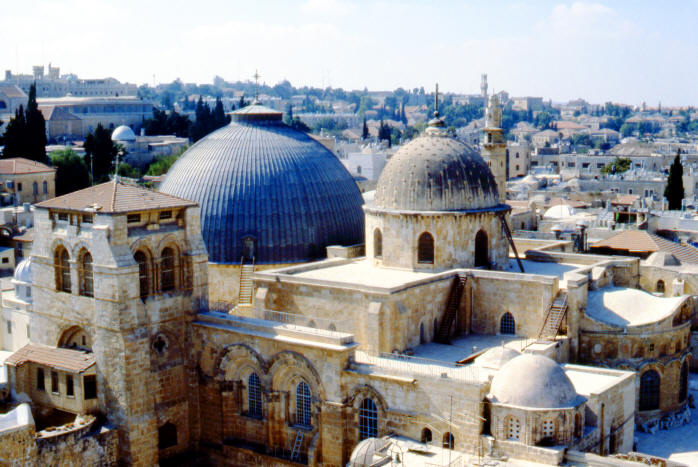
As I mentioned before, today the traditional locations of both Mt.
Calvary and the Garden Tomb are located inside the Church of the Holy Sepulcher,
which was built over these sites by Emperor Constantine after he converted to
Christianity in 315 A.D. At one time the authenticity of the sites inside
this church was doubted, but extensive archaeological, geological, and
architectural research in the past few decades has changed many minds. Today,
most scholars agree that these are the actual ancient sites that were revered by
the earliest Christians as the locations where Christ “was crucified, dead, and
buried.”
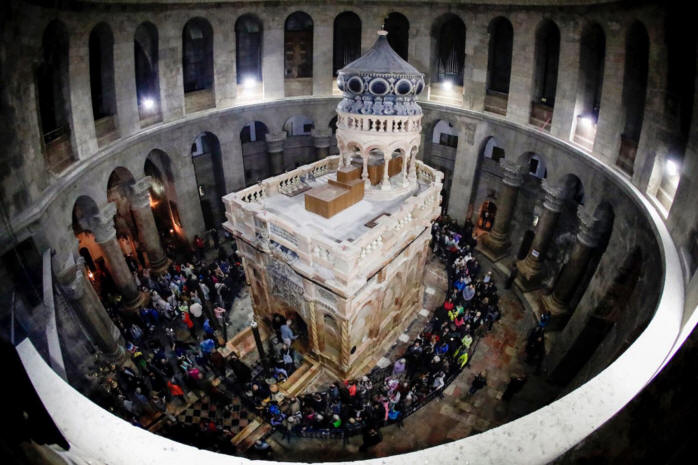
However, in the process of constructing the church, the emperor’s
engineers cut away nearly all the rocky hill into which Christ’s tomb had been
carved, leaving only a freestanding pillar of the original living rock
containing the tomb, enclosed in this small chapel that is located under the
main dome of the church.
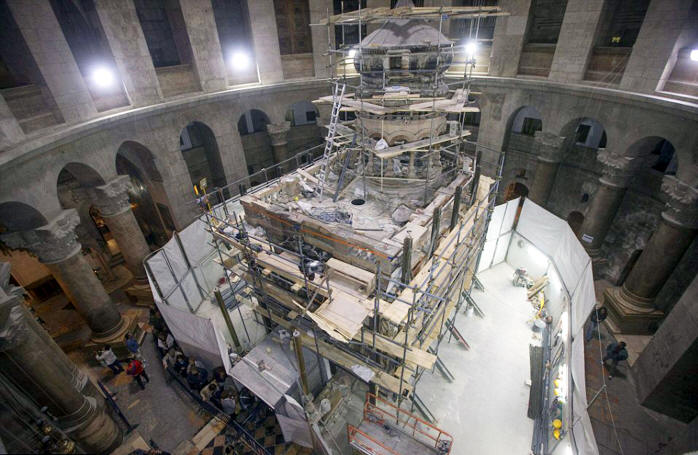
A few years ago, the National Geographic Society helped finance a major
restoration of the Church of the Holy Sepulcher. When they peeled away all
the marble and other decoration that had accumulated over the centuries, they
did indeed find underneath the original rock, into which the ancient tomb had
been carved. For the first time researchers were able to carefully study
the geology of this original rock, and how it had been cut down around the tomb
when the church was constructed.
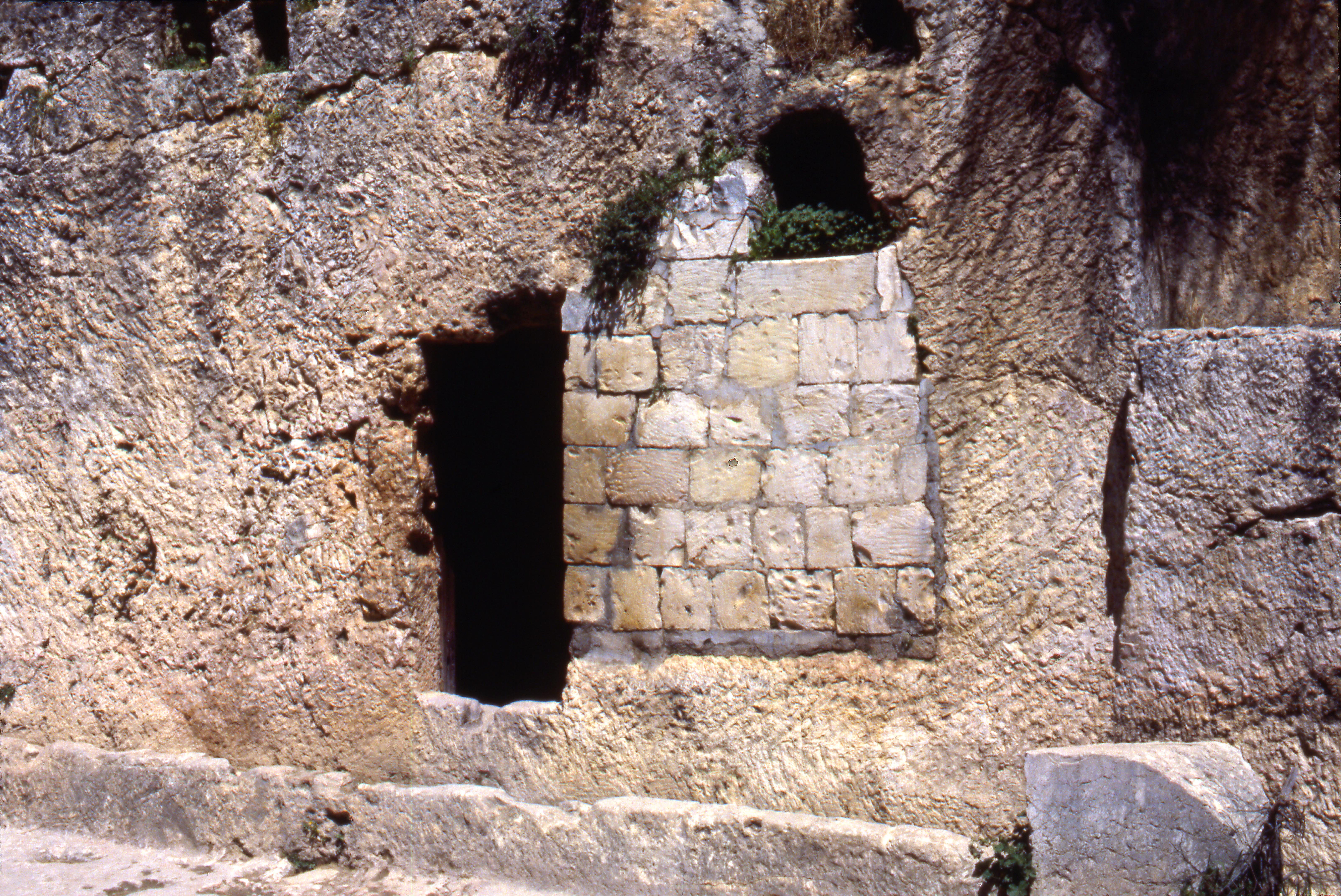
Because constructing the Church of the Holy Sepulcher totally
transformed the landscape, it is hard now to get a good idea what the tomb of
Christ would have originally been like. So, tourists are often taken to
another tomb on the other side of Jerusalem, called the Garden Tomb.
Although it is very unlikely this could be the actual tomb of Christ, it does
date from the same time period, and is probably very similar to the new tomb
that Joseph of Arimathea had prepared for himself, and in which he and Nicodemus
lovingly laid our Lord’s body, as the women looked on. So, visiting this
other ancient tomb does give you a good idea of what the tomb where our Lord’s
body rested and which the women found empty on Easter morn was actually like.
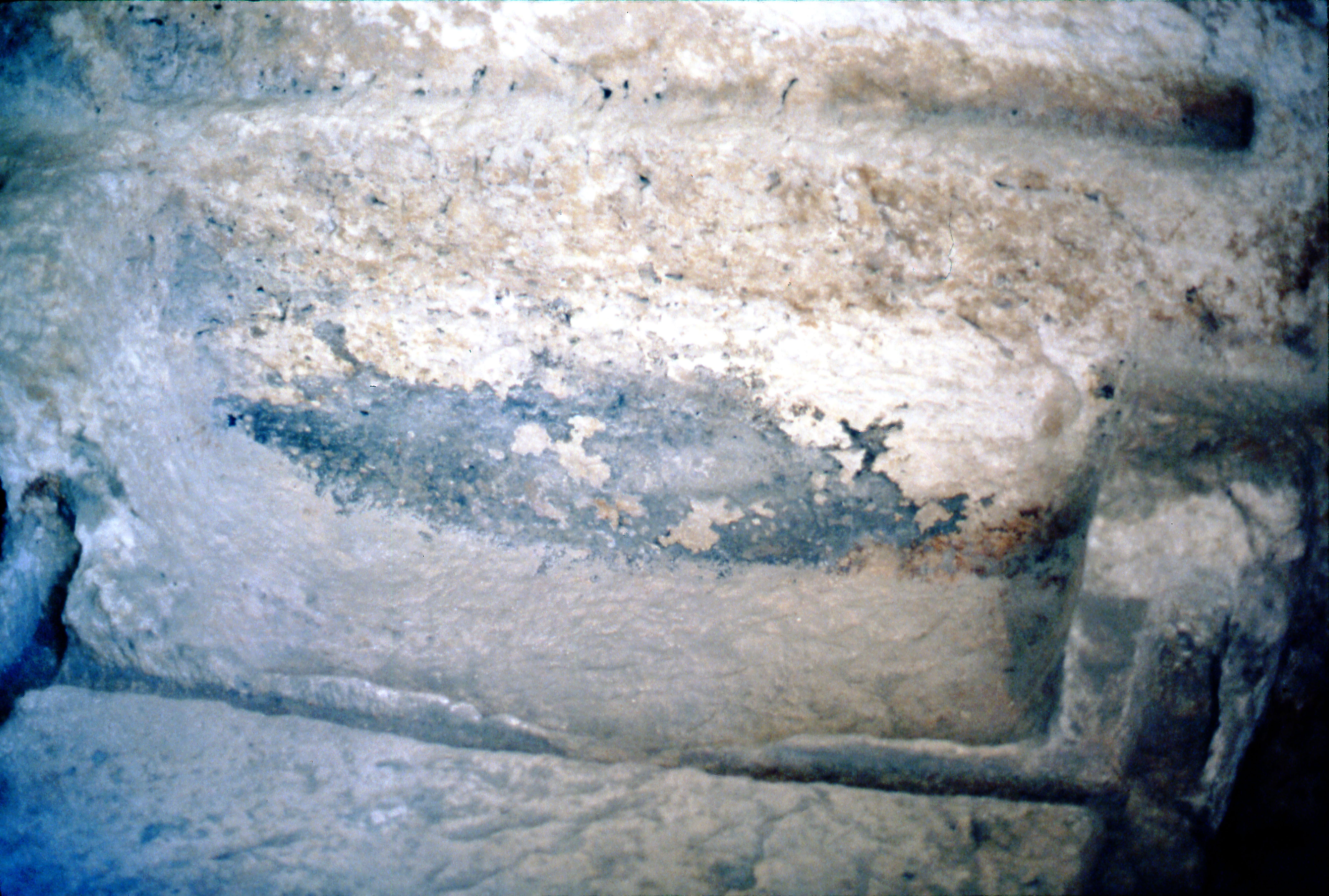
Inside the Garden Tomb you can see a niche along the wall where once
there would have been a slab like a bench, on which the body would have been
laid. When I worked as an archaeologist excavating in the Holy Land I
specialized in excavating underground tombs like this. The reason I was
assigned to the tomb crew was because most of the day was spent underground, and
my fair, freckled skin would burn easily in the desert sun.
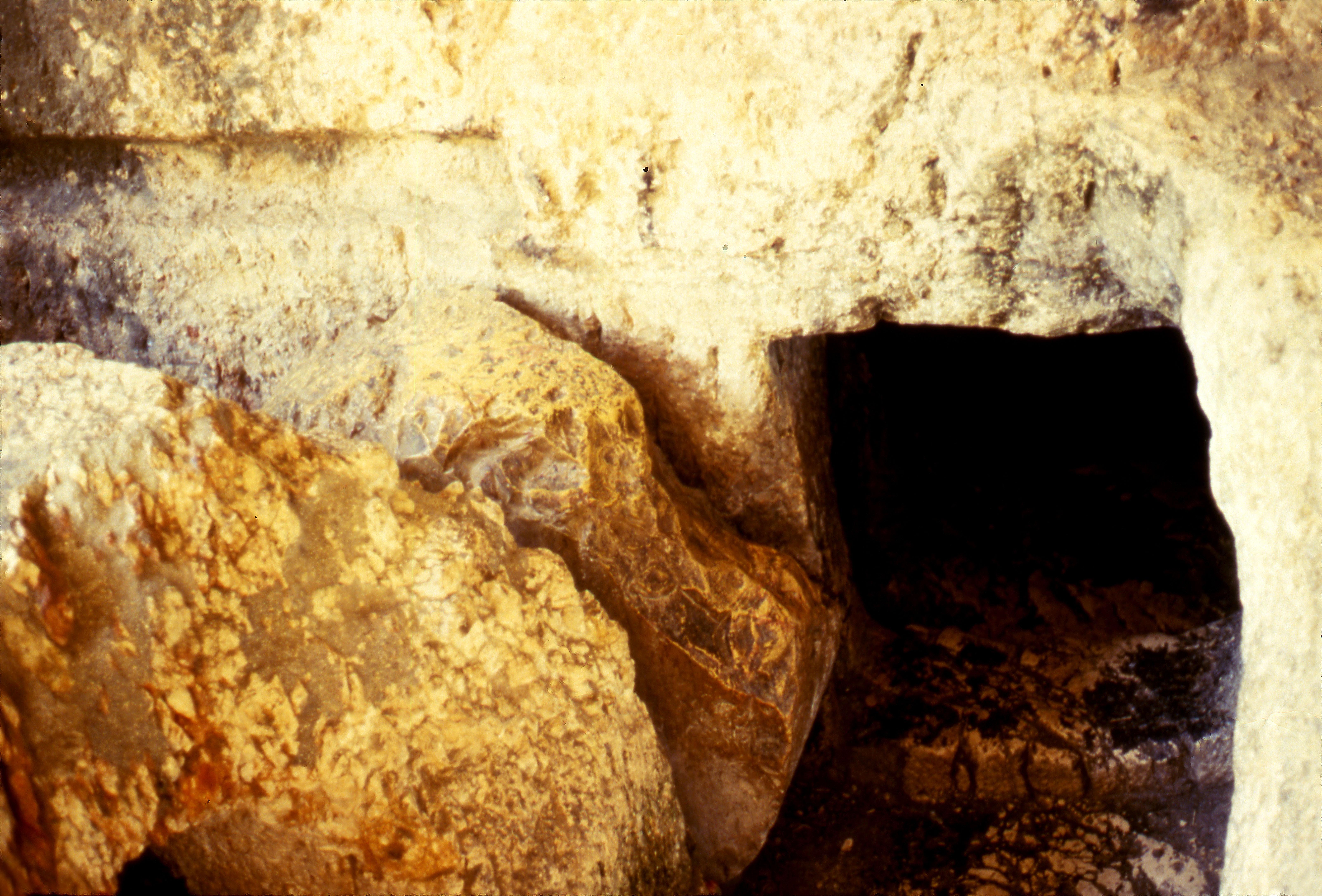
Near the Garden Tomb in Jerusalem are several other fascinating tombs,
again from the same era as the time of Christ. These tombs still have in
place the large stones that would roll, in a kind of stone track, across the
tomb door
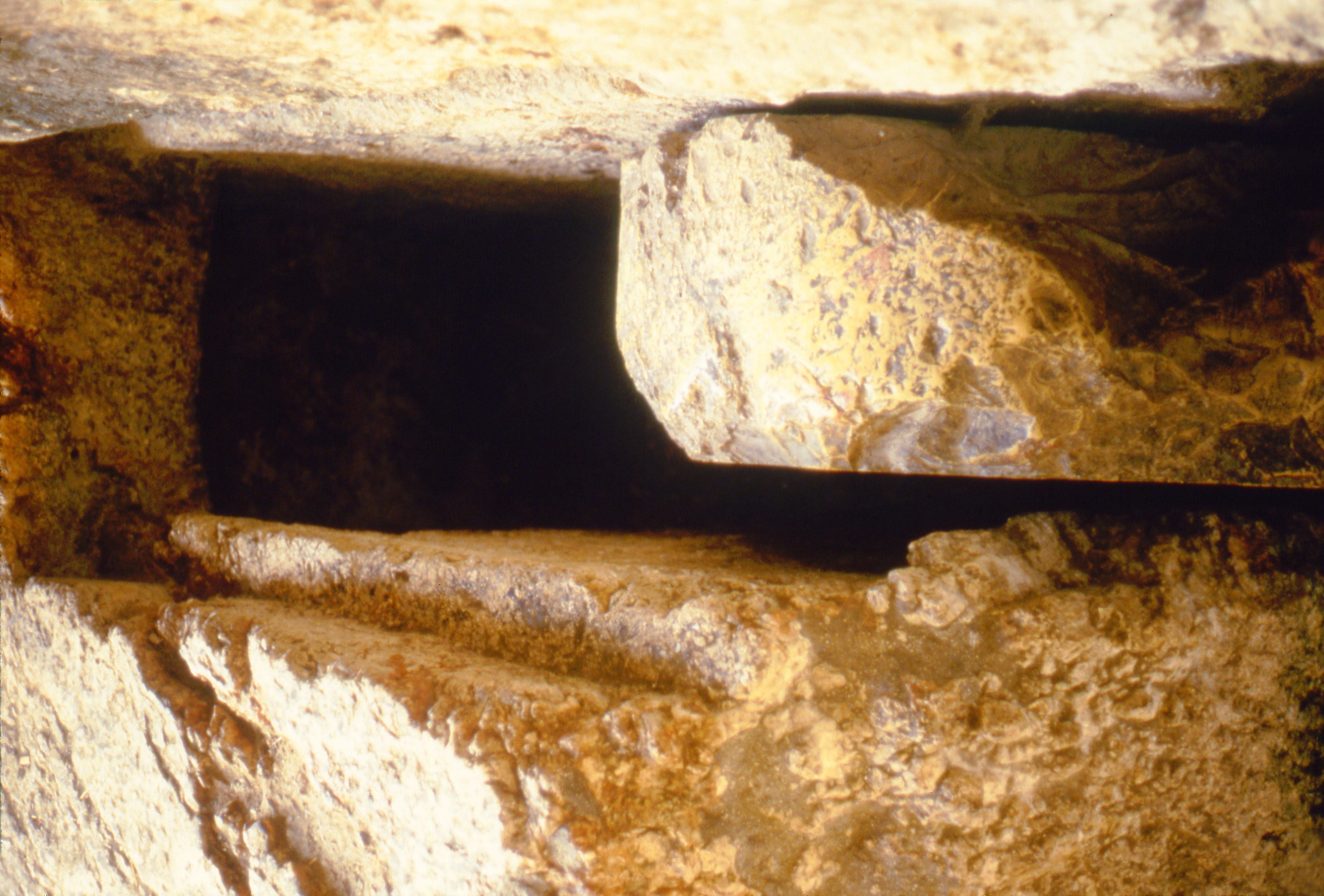
This picture is from above, looking down on top of the stone that rolls
in front of the tomb door.
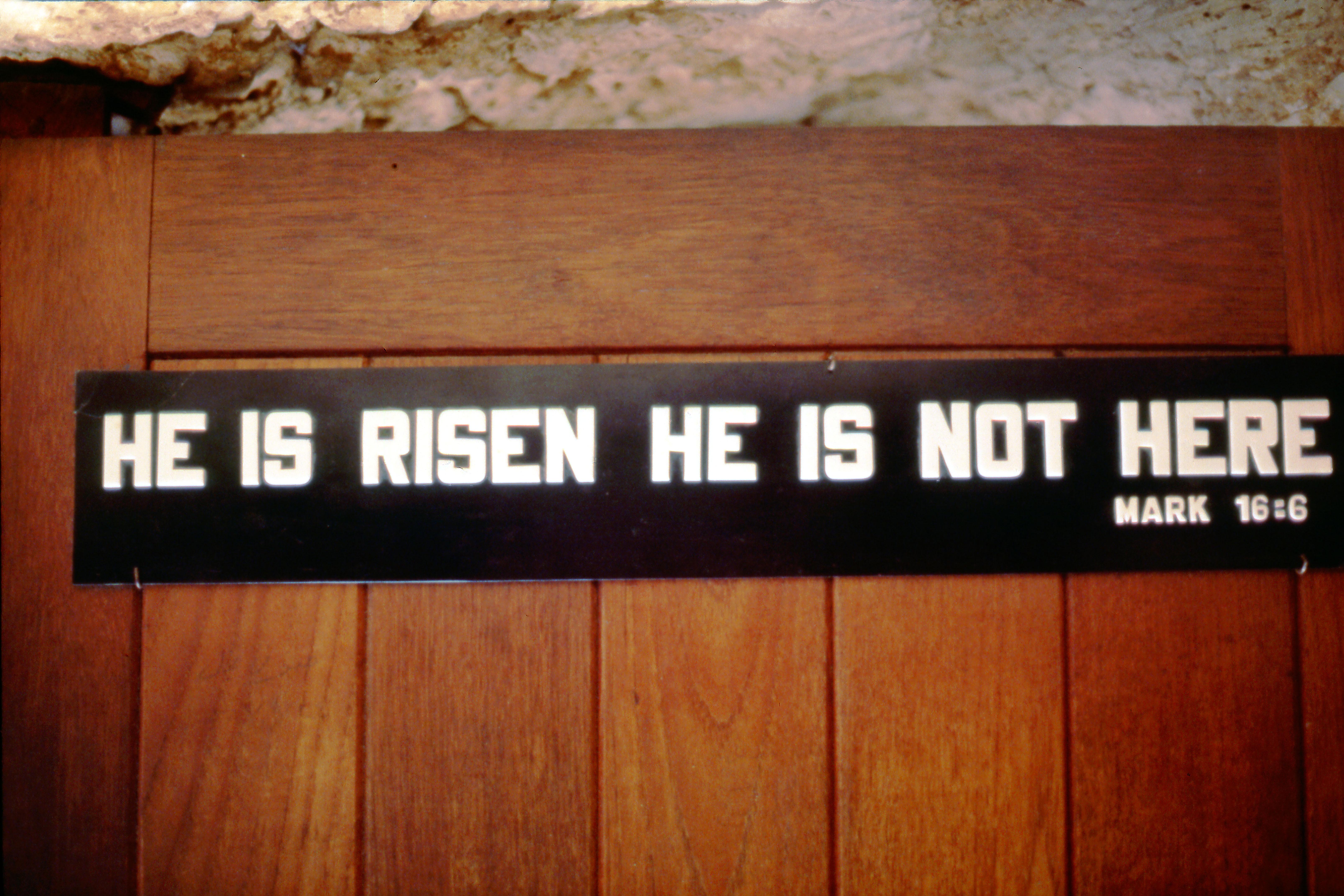
Though the Garden Tomb is mostly tourist attraction, it is quite
inspiring, and the modern wooden door on this tomb proclaims the joyous message,
“He is risen! He is not here!”
This Sunday we will begin another Holy Week with Palm Sunday.
Every year during Holy Week we remember how Jesus’ journey of suffering and
sorrow during the first Holy Week ended at the “cold, stone tomb.”
In the same way, our own journey of suffering and sorrow through this
life will eventually end for us all at the grave. For many of you and your
loved ones and ancestors, life’s journey has or will come to an end right out
there, in our cemetery. Psalm 90 puts it this way: “The length of our days
is seventy years, or eighty if we have the strength; yet their span is but
trouble and sorrow, for they quickly pass, and we fly away.”
The imminence of our impending death is a somber theme throughout
Scripture. “For everything there is a season,” Ecclesiastes declares.
“A time to be born, and a time to die. . . The dust returns to the ground from
which it came, and the spirit returns to God who gave it.” “Man is
destined once to die,” Hebrews warns, “and after that to face the judgement.”
In “Our Lenten Journey” this year, we have gone, in the words of the
Lenten hymn, to dark Gethsemane; we have followed to the judgment hall; we have
climbed Calvary’s mournful mountain; and finally we have ended our virtual
pilgrimage at the tomb, where they lay Christ’s breathless clay. “At the
place where Jesus was crucified, there was a garden, and in the garden a new
tomb . . . and since the tomb was nearby, they laid Jesus there.”
But, that is not the end of the story; the tomb is not the end of
Christ’s journey; and the grave is not the end of your life’s journey either.
For, as Paul proclaims in 1st Corinthians and 2nd Timothy: “Christ died for our
sins according to the Scriptures, he was buried, and he was raised on the third
day . . . Now if we have died with him, we shall also live with him.”
Long ago, it had been in a garden that mankind lost paradise and was
condemned to eternal death and damnation. Now, it is once again in a
garden that paradise and eternal life are restored. “Do not be afraid.
You are looking for Jesus of Nazareth, who was crucified. He is risen! He is not
here. See the place where they laid him.”
“And because I live,” Jesus promises, “you also shall live. . . I
am the resurrection and the life; whoever believes in me, even though he dies,
yet shall he live. . . For my Father’s will is that everyone who looks to
the Son and believes in him shall have eternal life, and I will raise him up at
the Last Day. . . Do not be amazed at this, for a time is coming when all who
are in their graves will heart [my] voice and come out.”
Just as “The Garden Tomb” of Christ was empty on Easter morn, someday,
some blessed day, the graves of all who have died in Christ, the graves in our
cemetery next door, and your own grave, will also be empty. As Martin
Luther says in the Small Catechism: “He daily and richly forgives all sins to me
and all believers, and will at the Last Day raise up me and all the dead, and
give unto me and all believers in Christ eternal life. This is most certainly
true.”
Return to Top | Return to Sermons | Home | Email Church Office